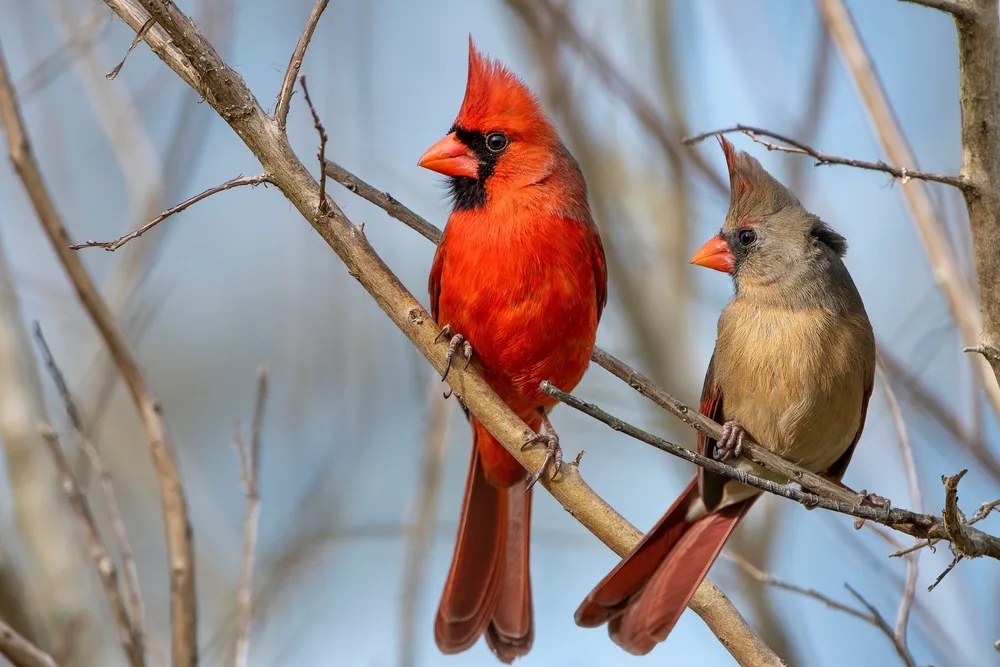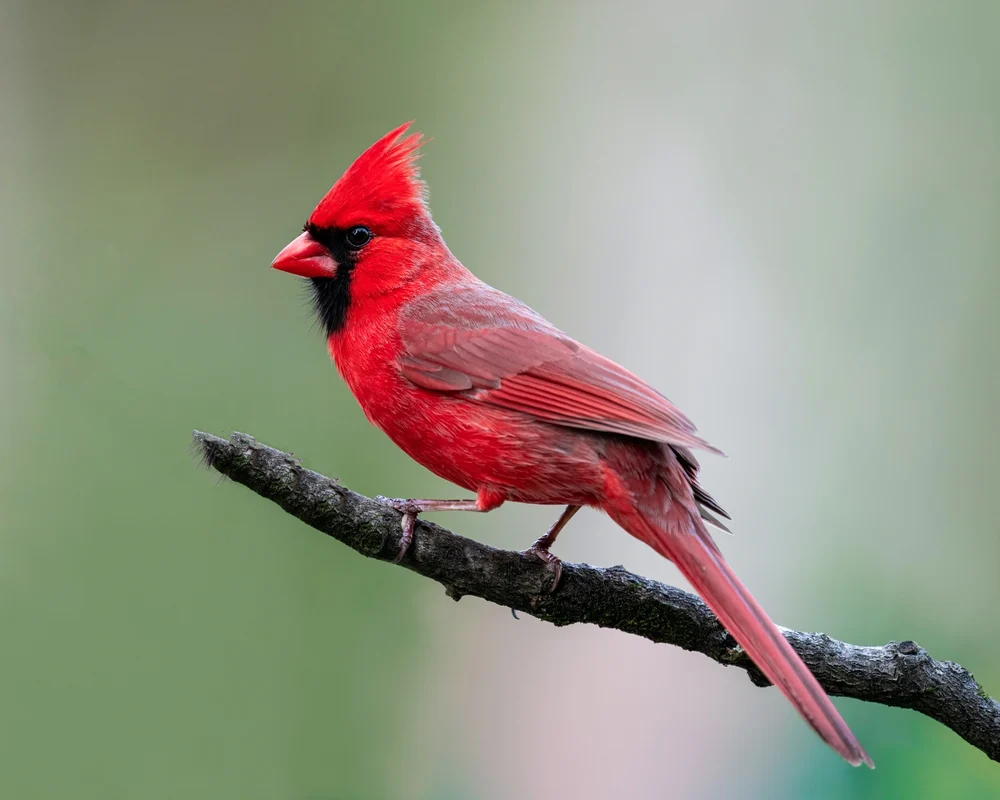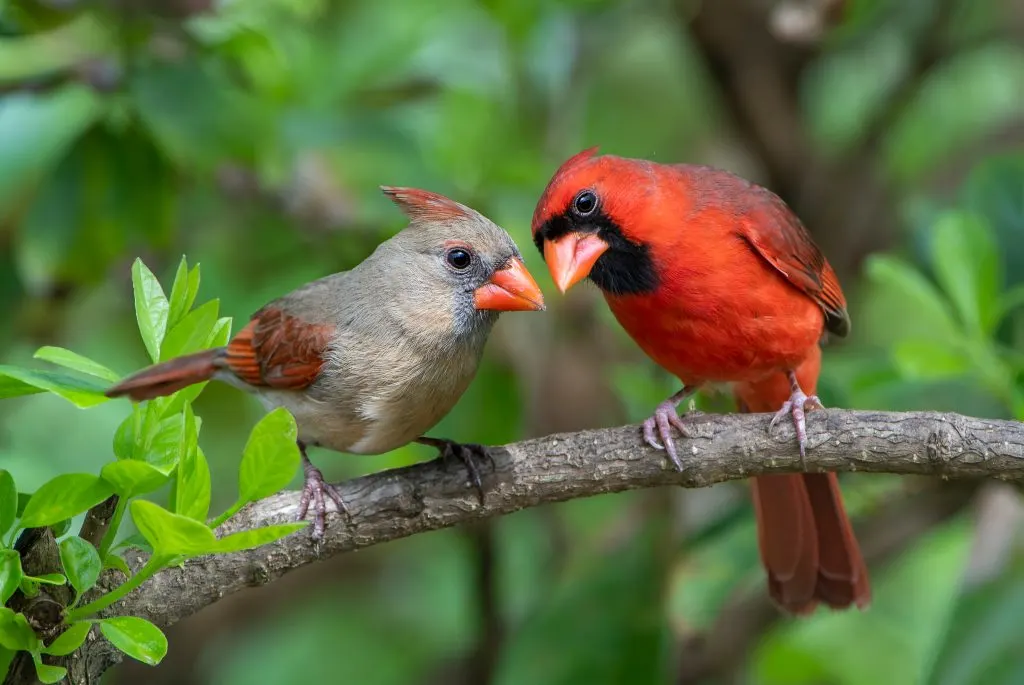It’s always exciting when wild birds come to your yard. Cardinals are easily spotted with their red feathers when you see one perched by your window.
The vibrant red color of the males’ feathers makes them noticeable wherever they are. Both males and females have stylish crests like top hats and sing happy songs.
Cardinals are comfortable in most rural and suburban areas in North America.
They don’t travel, so you can see them all year round. With some tips for landscaping friendly to cardinals, you can invite these familiar but beautiful birds to live in your yard.
1. Grow Trees and Shrubs Cardinals Love

Cardinals love to eat seeds. While they often visit feeders, they get most of their food from nature.
To attract cardinals, plant some of their favorite seeds in your yard. Native trees and shrubs are also good choices for attracting local birds.
Some favorite trees for cardinals are mulberry, serviceberry, flowering dogwood, crabapple, and spruce.
Top shrubs on their menu include staghorn sumac, red-osier dogwood, gray dogwood, and various viburnum species.
2. Create Layers in Your Garden
Thick, twiggy shrubs are often used as nesting spots by cardinals.
Cardinals build their nests using four layers of twigs, leaves, bark, and grasses. They take 3-9 days to build. Different shrubs provide the materials cardinals need to build their homes.
Besides plants that lose their leaves in fall, include evergreen shrubs and trees that cardinals prefer in winter.
Plant several of these shrubs together near your property edges to create a welcoming habitat. To double the benefit, choose shrubs that also provide food for cardinals.
3. Install a Water Feature

Cardinals are drawn to water, especially moving water, like other backyard birds. Make a birdbath and add a small solar-powered fountain, or buy one with a built-in fountain.
Moving water discourages mosquitoes from laying eggs in it.
Clean and refill the birdbath with fresh water every few days. In cold areas, a birdbath heater prevents the water from freezing solid.
4. Set up a Bird Feeder
Cardinals aren’t picky about feeder types. A platform feeder is good for watching birds, while a tube feeder is easy to fill and clean.
Use your preferred feeder, but follow ornithologists’ advice on using the right food. Cardinals prefer black oil sunflower seeds but also like hulled sunflower seeds, safflower, cracked corn, and peanut hearts.
Be cautious: Cardinals are slow fliers and easy prey for cats when they’re on the ground. Keep cats indoors and place feeders away from hiding spots for predators.
5. Support Caterpillars

During the breeding season in summer, cardinals switch to a diet rich in insects, especially soft caterpillars, to feed their chicks.
Add plants like dill, fennel, parsley, coneflowers, and milkweed to your garden to attract caterpillars.
If you don’t want to add plants, avoid using pesticides that kill caterpillars, which are crucial food for cardinal chicks and other backyard birds.
6. Leave Perennials Standing in Winter
Dried seed heads and foliage provide foraging grounds for cardinals in winter. A large stand of perennials with nearby shrubs offers food and shelter for winter flocks.
7. Provide Roosts
Male cardinals often sing from high perches in trees.
For smaller spaces, choose columnar or narrow trees like arborvitae. These trees grow tall, providing perches for cardinals without crowding nearby plants or structures.
Fun fact: Few female North American songbirds sing, but the female northern cardinal does, often while on the nest. Scientists believe her songs tell her mate when to bring food to the nest.
